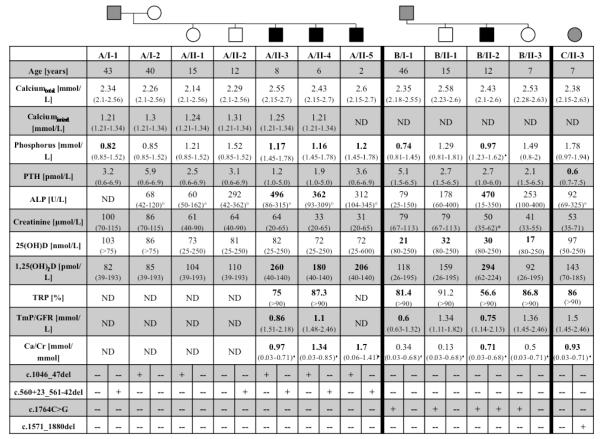Fig. 1. Laboratory findings in patients with hereditary hypophosphatemic rickets with hypercalciuria (HHRH) or idiopathic hypercalciuria (IH) caused by novel SLC34A3 utations.
Biochemical parameters for the index cases in kindreds A, B, and C were measured at the indicated ages before therapy was initiated. Age-related reference ranges in parentheses (*http://www.mayomedicallaboratories.com/, °http://cclnprod.cc.nih.gov/dlm/testguide.nsf/Index/1D336E0232533D3285256B9C0059ECEA, and respective clinical laboratories); age-related reference ranges for TmP/GFR and Ca/Cr are from [43] and [44], respectively. All abnormal values are shown in bold. Circles denote females, squares denote men. Black symbols indicate affected individuals, who presented with hypophosphatemia, hypercalciuria, elevated 1,25(OH)2 vitamin D levels, and skeletal findings consistent with rickets, while grey symbols indicate affected individuals, who had one or more of the above biochemical abnormalities. Open symbols indicate healthy individuals.
Abbreviations are as follows:
ALP, alkaline phosphatase; Ca/Cr= urinary calcium/creatinine ratio; n.d., not determined; PTH; parathyroid hormone; TmP/GFR, maximum tubular phosphate reabsorption per glomerular filtrate; TRP, tubular phosphate reabsorption; 1,25(OH)2D, 1,25(OH)2 vitamin D; 25(OH)D, 25(OH) vitamin D

